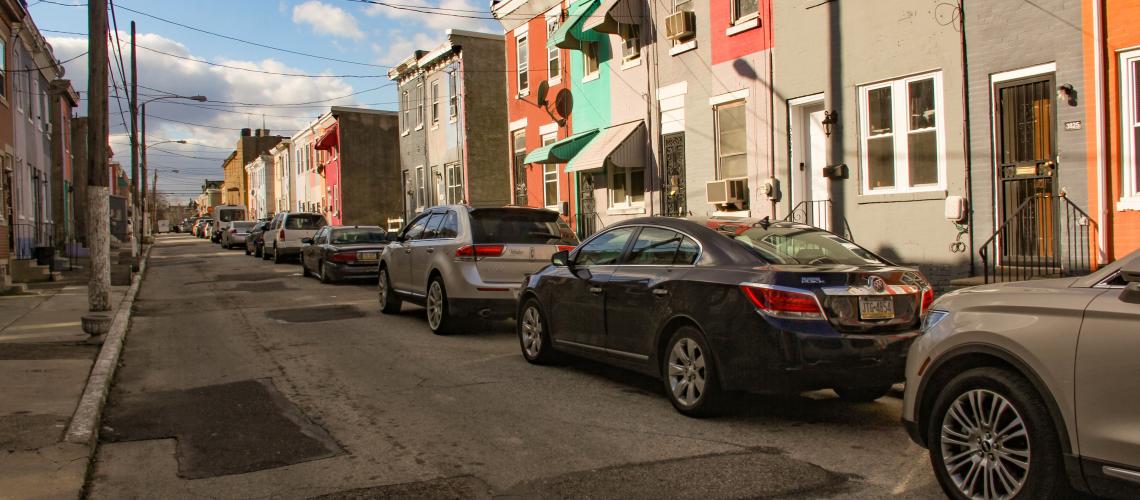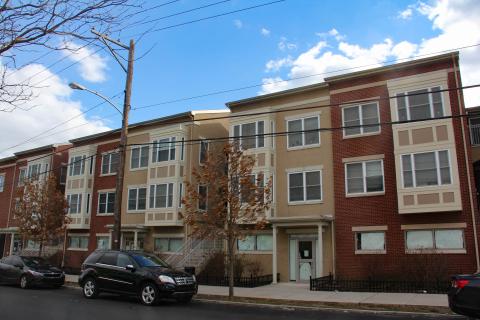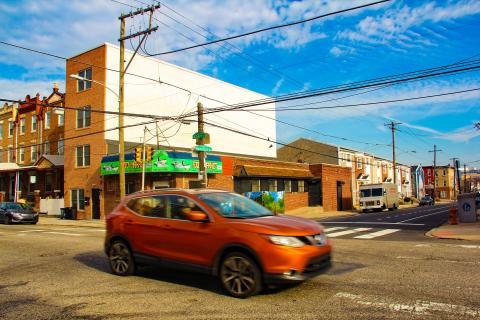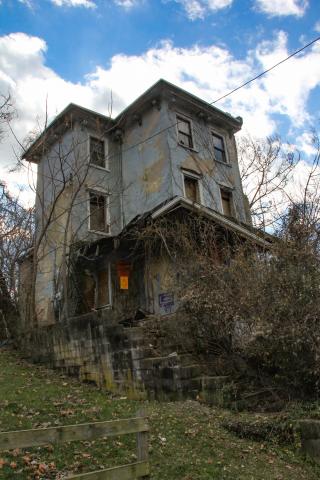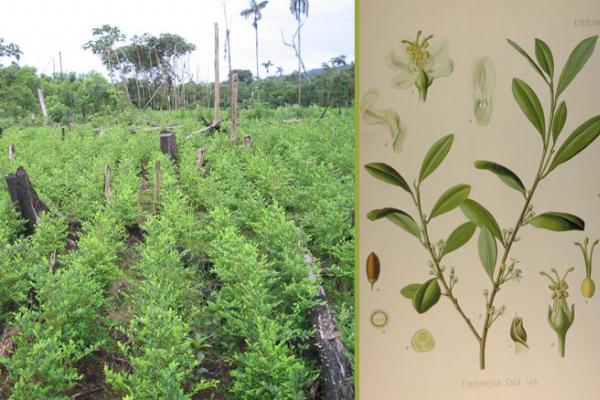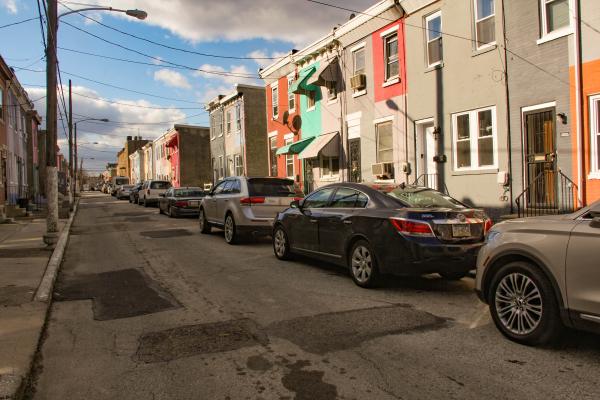The West Philadelphia Promise Zone
Part of
In 2014, President Barack Obama designated Mantua and several other poor neighborhoods north of Market Street as the West Philadelphia Promise Zone.
In 2014, President Barack Obama designated Mantua and several other poor neighborhoods north of Market Street as the West Philadelphia Promise Zone. This 10-year designation offers the Promise Zone’s government and community partners “preference points” in federal grant applications to generate opportunities in housing, education, and employment. The Promise Zone is administered under the auspices of the city’s Office of Community Empowerment and Opportunity.
In the first half of the last century, Mantua was a terminus for black migrants from the Jim Crow South, drawn north by the prospects of good jobs and improved race relations. Unhappily, these prospects rapidly diminished as the Great Migration accelerated after 1945. A combination of negative social forces in the two decades following the Second World War—lack of jobs and job networks, coupled with discriminatory hiring practices; federally-backed redlining of black neighborhoods; white flight and the outmigration of middle-class blacks; and under-resourced schools—contributed to driving Mantua and its adjacent neighborhoods north of Market Street into a cycle of persistent poverty, something from which these neighborhoods have yet to recover. In 2016, the unemployment rate stood at 12.3 percent, more than double the citywide rate of 5.8 percent; the poverty rate was 50.6 percent, and the deep-poverty rate was 32.3 percent.[1]
In 2017, approximately 22 percent of the parcels north of Market and west to 48th Street were reported as vacant (vacant buildings or vacant lots), with the number of Mantua’s vacancies exceeding this average. Since the mid-1990s, the large-scale demolition of blocks of abandoned and crumbling houses (coupled with the leveling of Mantua Hall in 2008 and its replacement by smaller houses) have taken a heavy toll on the neighborhood’s housing density. A Philadelphia journalist illustrates the problem confronting Mantua planners: “On Haverford Avenue near 36th Street, a new three-story apartment house, hung with uplighters and an entry intercom, sits next to a derelict industrial building with its roof open to the sky and young trees growing out of fissures in its concrete. Next door, another blighted building is boarded up with graffiti-covered plywood, while across the street sits an artist’s studio covered with a multicolored riot of painted heads, hands and vegetation.”[2]
At present, there are some hopeful signs that Mantua may yet be revitalized. In 2014, President Barack Obama designated a swathe of West Philadelphia neighborhoods, including Mantua, as one of twenty-two national Promise Zones. Promise Zones are advertised as entities organized to “leverage federal resources to increase economic activity and opportunity, create jobs, improve education and reduce violent crime. In other words, it [is] an initiative with a goal to level the playing field between the haves and the have-nots.”[3] The West Philadelphia Promise Zone is administered by Philadelphia’s Office of Community Empowerment and Opportunity (CEO) and is part of the CEO’s citywide Shared Prosperity initiative. While Promise Zone status isn’t a guarantee of federal grants, its more than 100 partners receive “preference points” in federal grant applications. Between 2014 and 2018, the Promise Zone was the beneficiary of $69 million in grants from eight separate federal agencies. As of 2018, the Promise Zone was designated an Opportunity Zone, which, under the federal Tax Cuts and Jobs Act of 2017, authorizes tax incentives to new investors.[4]
In 2016, one of the institutional partners, Drexel University, following a five-year planning process with “nonprofits, community organizations, schools and families,” received a five-year, $30 million Promise Neighborhoods grant from the U.S. Department of Education to leverage improvements and community education services at seven Promise Zone schools—Belmont Charter (K-4); Locke Elementary (K-8); Morton McMichael Elementary (K-8); Martha Washington Elementary (K-8); Samuel Powel Elementary (K-4); Science Leadership Academy Middle School (5–8) and West Philadelphia High School (9–12): “The money will be used to expand early literacy and science education, empower parents to get involved in their children’s education, improve access to education and job training for young adults, and provide behavioral support to the schools and the wider Mantua community.”[5]
At the onset of 2019, the West Philadelphia Promise Zone program stood at the mid-point of its 10-year designation. While no one could declare victory in any sector targeted for improvement, the program’s city and non-profit supporters claimed to have achieved an organizing success: unprecedented “collaboration between government and community groups” as the “foundation for poverty reversal.” This foundation, they insisted, boded well for achieving their goals for improved housing, education, and economic development that would benefit all of Mantua’s residents.[6] Yet the message of neighborhood-wide benefit was not well publicized, certainly not on a door-to-door basis, and the community planners had no answer to skeptics who feared that new apartment developments, with increased sales, higher rents, and higher property taxes would spur gentrification. “[The] influence of the area’s educational and medical institutions,” noted the City Planning Commission, “can be seen throughout the Mantua and West Powelton/Saunders Park neighborhoods. Student demand is concentrated south of Haverford Avenue, but speculative activity has occurred throughout Mantua, and units are being marketed to students as far north as Girard and Parkside Avenues.” The Planning Commission seemed to pin its hopes on northern Mantua as a locality for building and maintaining “affordable housing for low and moderate income households.”[7]
[1] “In blighted Mantua, a History of Poverty, Crime, and Pride,” Aljazeera America, 28 January 2014, accessed from http://america.aljazeera.com/articles/2014/1/28/obama-philadelphiapromizezonesmantua.html, 4 January 2019.
[2] Philadelphia City Planning Commission, Promise Zone Comprehensive Planning Strategy (Philadelphia: City Planning Commission, 2017); U.S. Census, census tracts 108 & 109, 1970, 1980, 1990, 20001, 2010, 2017; Jon Hurdle, “Closing in on 5 Years, Mantua’s Promise Zone Designation Has Laid a Foundation for Poverty Reversal,” Philadelphia Weekly, 2 November 2018, accessed from http://www.philadelphiaweekly.com/news/closing-in-on-years-has-mantua-s-promise-zone-designation/article_e942fa00-ddf7-11e8-bf67-df2284eb4873.html, 7 January 2019.
[3] “Cautious outlook on Obama's Promise Zone initiative in Philly,” Philadelphia Tribune, 21 July 2015, http://www.phillytrib.com/news/cautious-outlook-on-obama-s-promise-zone-initiative-in-philly/article_21b7323e-9147-5c73-9f25-c33b1b5e8863.html.
[4] ”Meet Samantha Porter, the West Philly Promise Zone’s Biggest Cheerleader, Generocity Philly, 17 December 2018, accessed from https://generocity.org/philly/2017/12/13/samantha-porter-west-philadelphia-promise-zone/, 4 January 2019; “Multi-Million Federal Grant to Support Seven West Philly Schools, West Philly Local.com, 22 December 2016, accessed from http://www.westphillylocal.com/2016/12/22/multi-million-federal-grant-to-support-west-philadelphia-promise-neighborhood-schools-families/, 4 January 2019; Hurdle, “Closing in on 5 Years.”
[5] “How Drexel Won a $30M Grant for West Philadelphia Schools,” 21 December 2016, accessed from https://drexel.edu/now/archive/2016/December/Promise-Zone-Grant/, 7 January 2019.
[6] Hurdle, “Closing in on 5 Years.”
[7] Philadelphia City Planning Commission, Promise Zone Comprehensive Planning Strategy.
